How I discovered the best room in Paris
My surprise find above the Richelieu Library - a veritable millefeuille of architecture.
You know what I love about Paris? Even though I’ve made a job of hunting hidden highlights, even when I think I have my finger on the pulse of the city, I can still very easily get gobsmacked by something I never knew was there.
Case in point: The museum above the Richelieu Library. Specifically the Mazarin Gallery. That’s it pictured below. In a rush? Here’s the link to its official site.
But before we get to the gallery, before we even get to the museum, get this: I actually visited the site over the summer and missed the museum totally. I was just there to see the famed reading room, the Salle Ovale (pictured below). That room took my breath away and I was quite satisfied. It’s free to enter and it’s spectacular.
Upon leaving the reading room, I was drawn to the curved staircase by the main doors, so I went up the stairs to see where they led.
A security guard up there said: “Where’s your ticket?” I said I didn’t have one. He said I had to go back down. I didn’t even ask what a ticket would have unlocked. I left, just centimetres from one of the great Paris museums.
Imagine all the other people who’ve done the same! If I’d only known that for ten euros, I could have entered a treasure trove of ancient marvels inside opulent galleries!
So how did I discover this magical room? Well, I needed a podcast episode subject beginning with R for the current ABCson, and I was leaning hard toward Roman Paris. The Arene de Lutece, the ruins under the Notre Dame, the treasures at the Musee de Cluny… but, in all honesty, it seemed too daunting a task. After all, Roman Paris wasn’t covered in a day, as I always say. So I went for the Richelieu Renovation instead. Double R. A good omen.
You see, they’d recently spent 250 million euros and 12 years redoing this Richelieu site in the 2nd arrondissement, and I wanted to know more. I contacted their press department for an interview, but they were hopeless, so I decided to visit as a tourist and bring the microphone with me.
And I’m so glad I did. I started in the Rose Bakery downstairs, a decent little canteen, then took a big loop around the interior of the library.
Then I bought a ticket for the museum upstairs and went up, quite unsure what I’d find.
What followed was pure wonder as I walked from room to room, my mind blown by ancient relics in tastefully designed halls. A third century golden fertility bracelet from Rome. An Italian carved olifant horn from the 11th century. Silver platters from the Roman empire that are perfectly preserved (despite being found in a river 400 years ago). [Incidentally, it looks like I covered Roman Paris after all.]
As for the building itself, the official website so rightly nailed it: it’s a veritable millefeuille of architecture.
A security guard stopped me halfway through the visit and said “Don’t forget to go to the Mazarin Gallery before you leave, some people miss it, walk past the top of the staircase to the other side of the building. You won’t regret it.” I eventually made my way there and I said to my wife - and to all the podcast listeners - “This might be the best room I’ve ever been in”.
Here’s the podcast episode by the way, 22 minutes long, click play to listen.
This gilded gallery was made in 1646 and is immense. It measures 45 meters in length (150 feet), 8m wide, and 9m high.
The frescoed vault is dizzyingly beautiful. On the app BNF Richelieu (which is free to download and is also in English), you can learn all about it.
I particularly liked that the restorers made some fascinating discoveries while working on these ceiling paintings. Most notably, they removed the “modesty veils” from many of the painted figures, whose dignity had been preserved in touch-ups a few years after the originals were made. In other words, many of the figures are now topless once again.
For the double whammy, it’s not just the room that is visually magnificent, it’s the treasures on display. This is a true cabinet of curiosities.
The centre point of the room is one of the Coronelli globes – the first to use the word “America.” You can read more on the globes here from when we visited the large versions at the library’s sister site.
There is the throne belonging to King Dagobert from the Middle Ages, next to King Charlemagne’s ivory chess pieces.
Further down the hall are Mozart’s handwritten score of “Don Giovanni” and some of Émile Zola’s original manuscripts (you’re even able to see his corrections and adjustments!) Plus there’s the original scroll from the 120 Days of Sodom.
We shared a lot more of our pictures and all the practical details on this week’s blog post, you can find it right here.
All in all, I was delighted with the afternoon and happy to share it on the podcast. And I still can’t believe I’d never heard about it. Had you?
So, what’s the moral of this story? I’m not sure. Perhaps to always go upstairs in Paris. Or to always buy the ticket… or to always listen to The Earful Tower for the best tips in Paris.
Incidentally, this month I’ll release the 7th (!!) edition of my PDF guide to Paris. The Richelieu will obviously feature, as will great things to do in all 20 arrondissements, from cafes and bars to museums and parks.
You’ll be able to buy it from my online store, or, as always, it will be free for Patreon members. I’ll make it free for the paid subscribers here on Substack too. For everyone else, it will be on sale for €19.99. Watch this space.
In the meantime, I’m working on upcoming episodes on topics beginning with S, T, U and V. What are your best guesses?




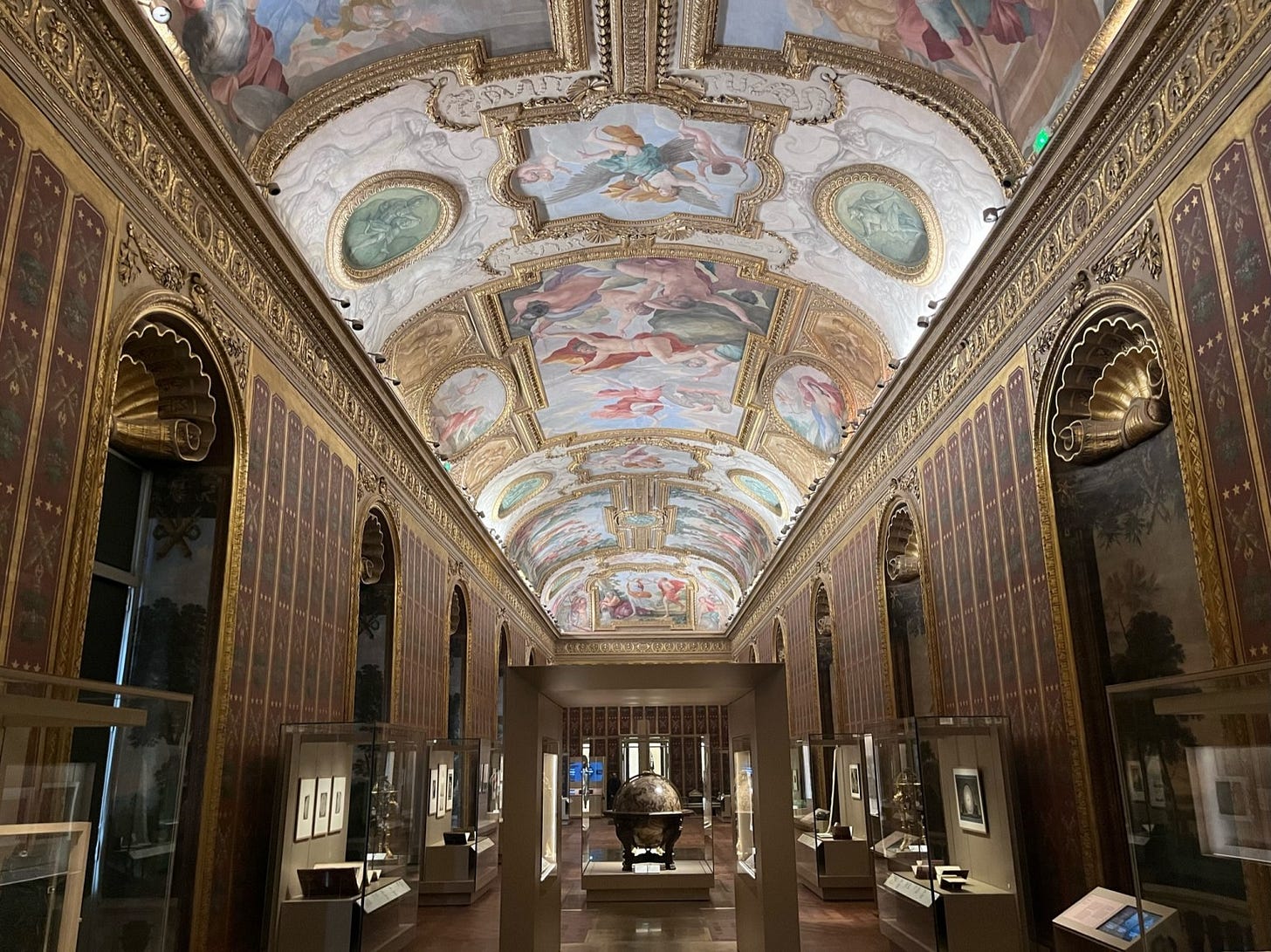




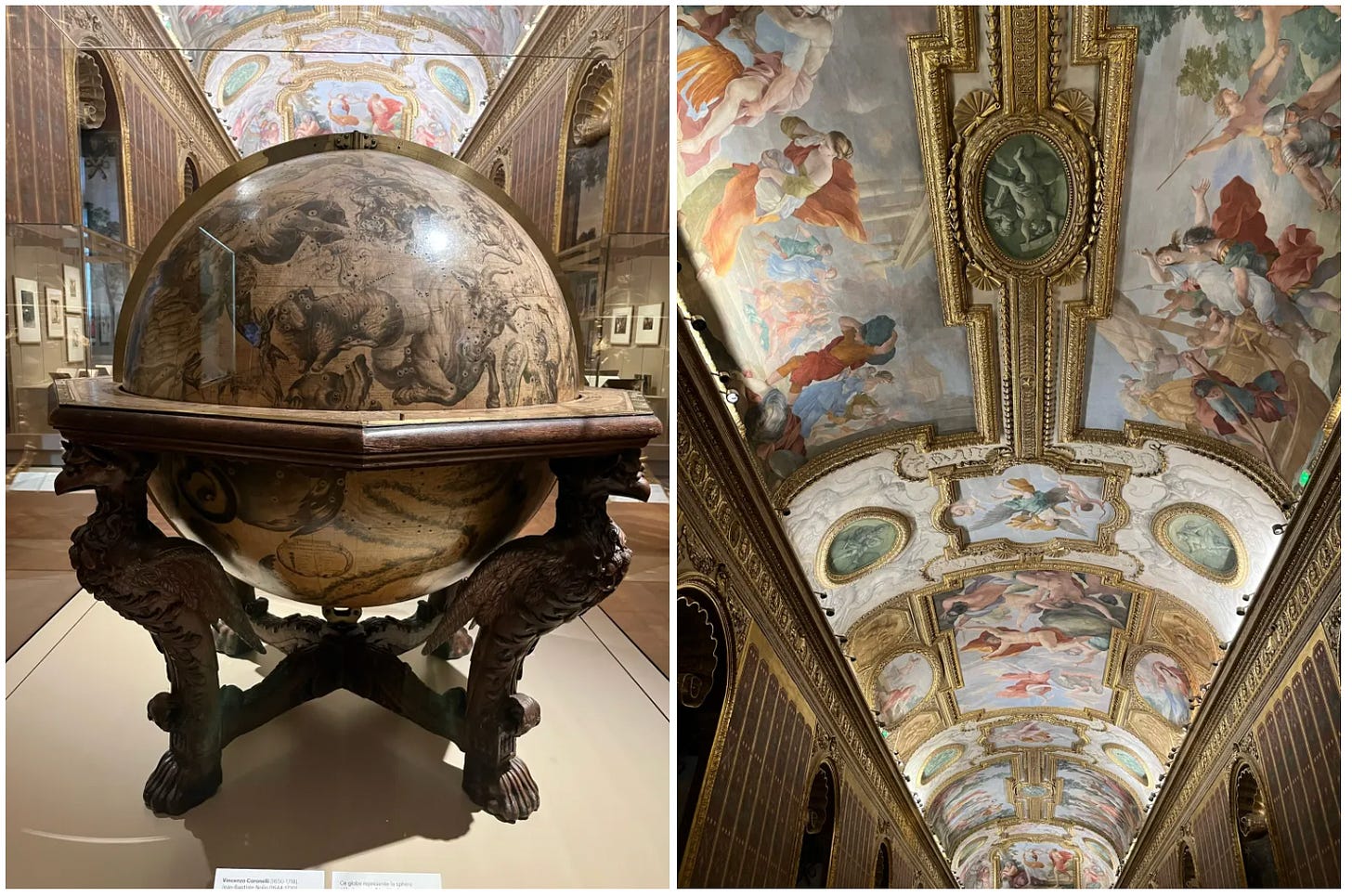
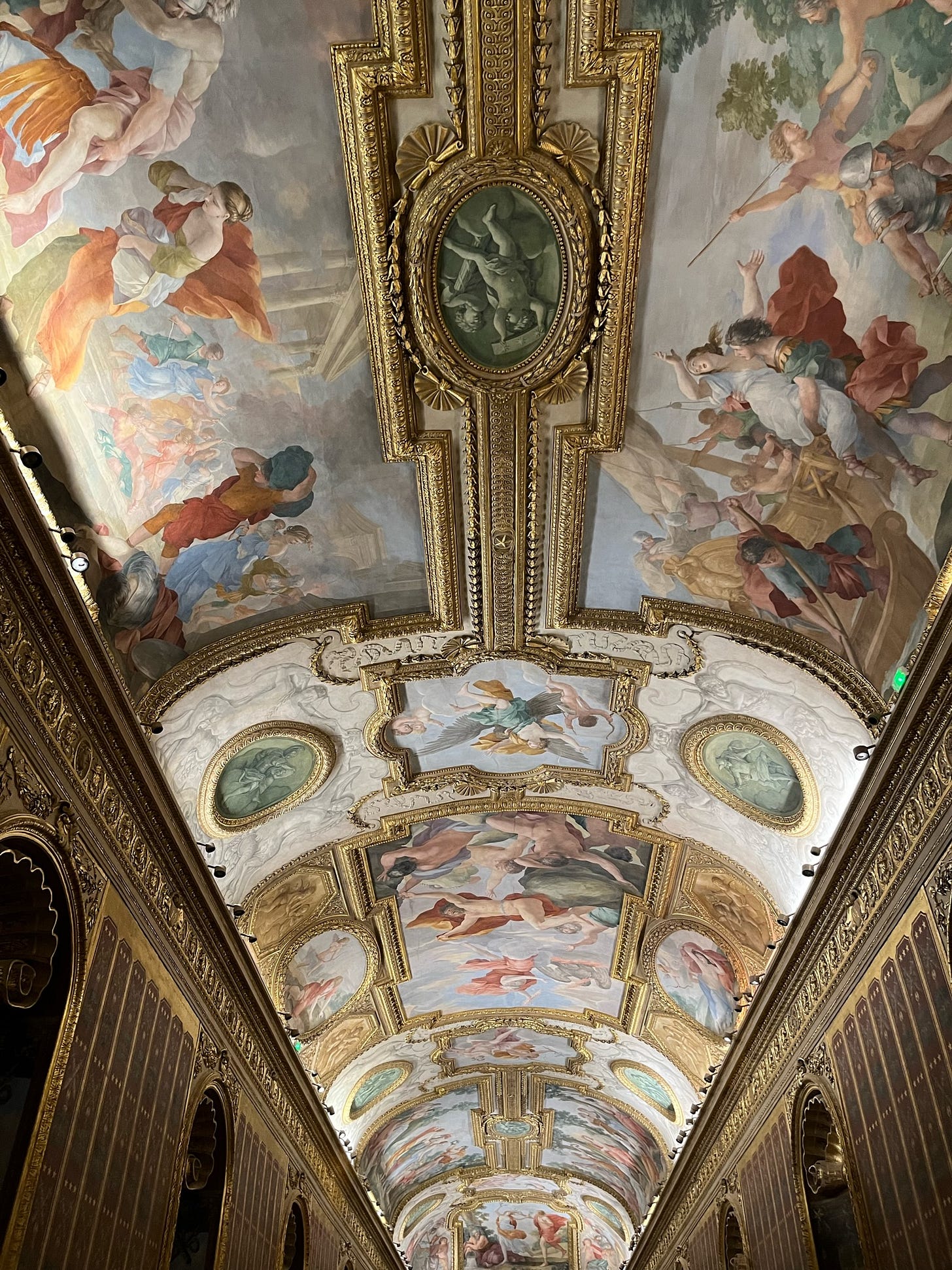
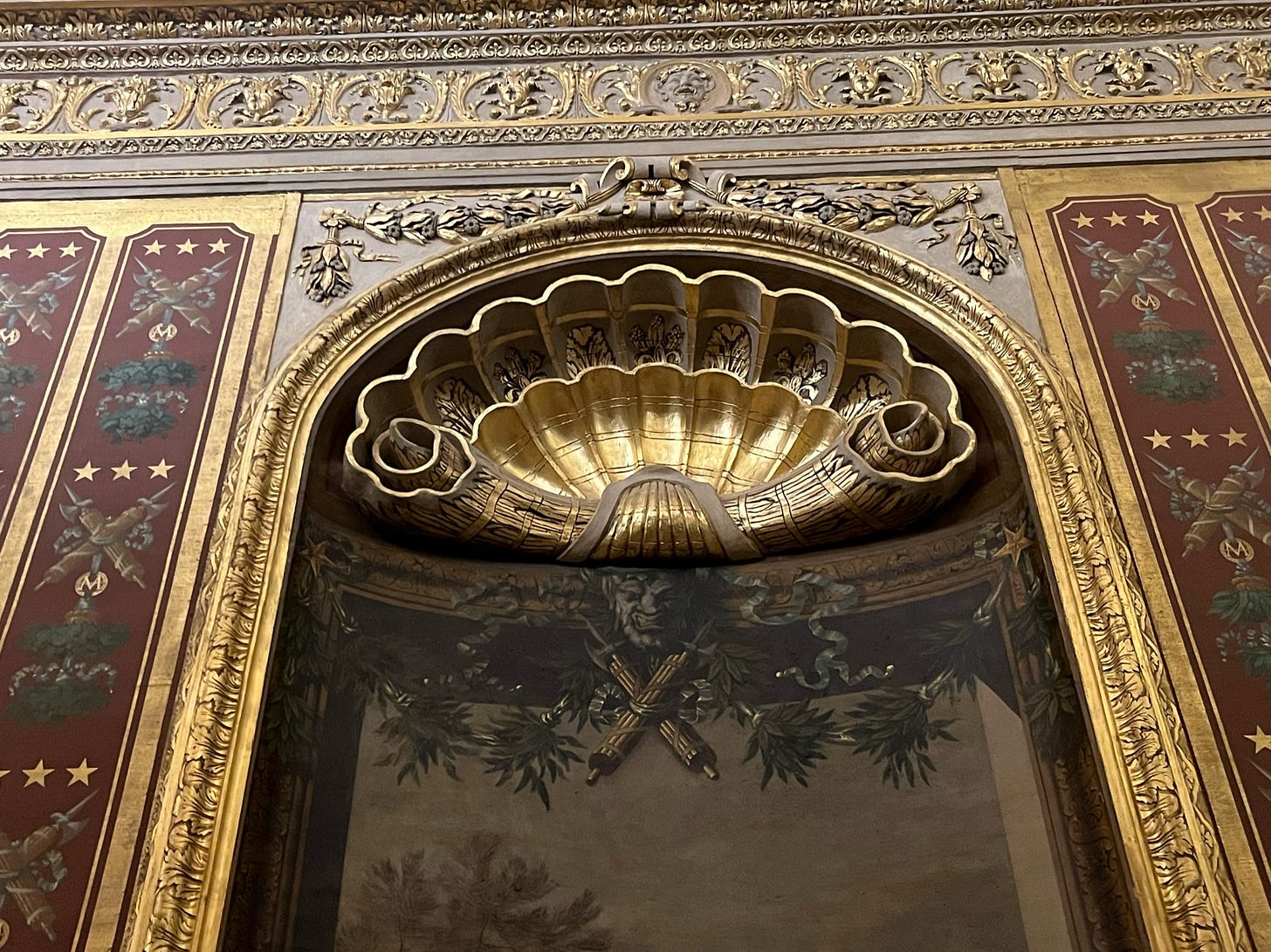


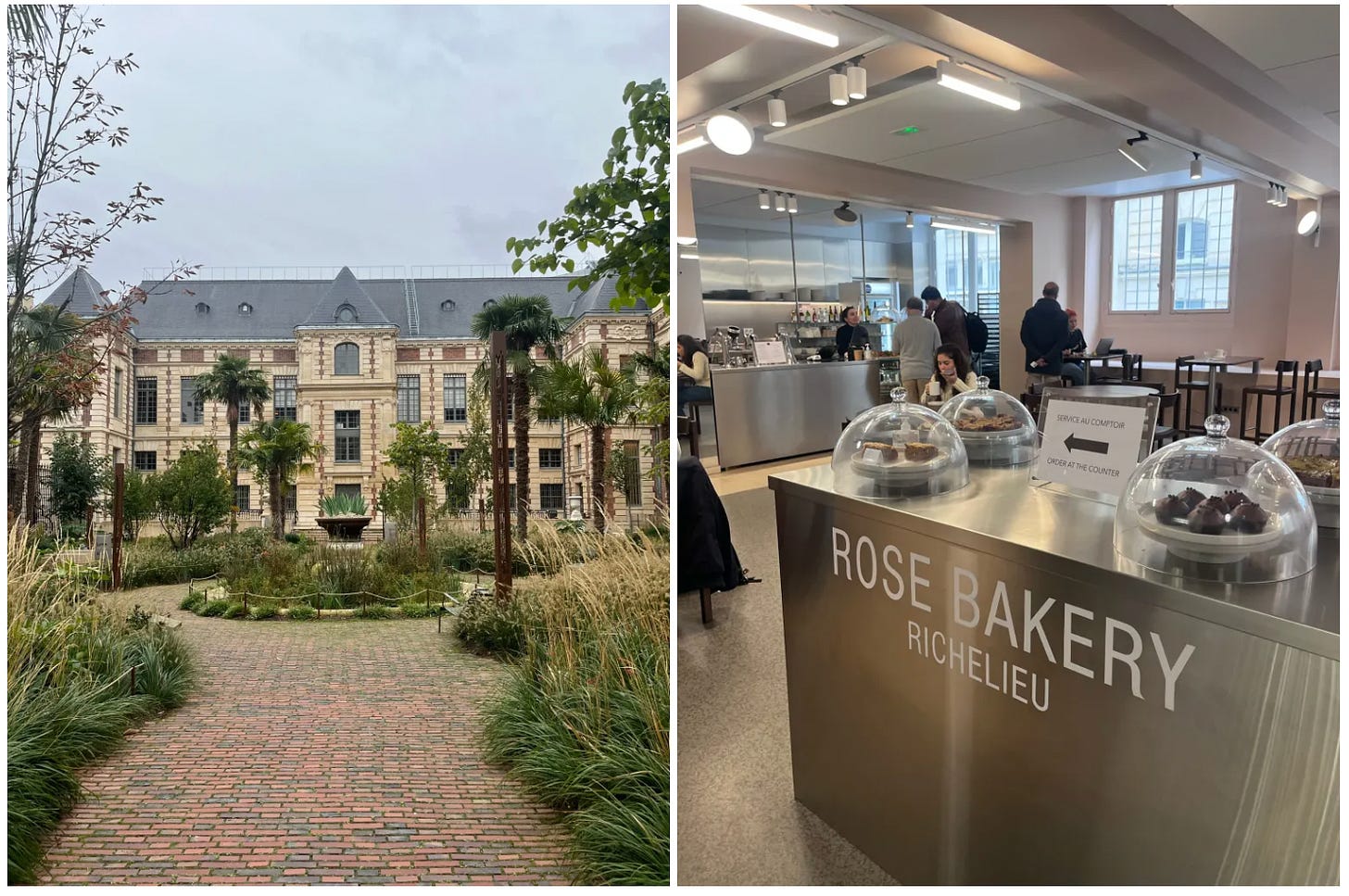
Fascinating! Mazarin was such an amazing influence in France, yet he’s relatively unknown by most tourists. The Mazarin library in the Academy is one of my favorite places in Paris to write or just walk through. I did not know about this fabulous museum, so thank you for sharing!
Thank you, Oliver for this recommendation. I hope we can visit it while we are there in the spring. It sounds delightful!